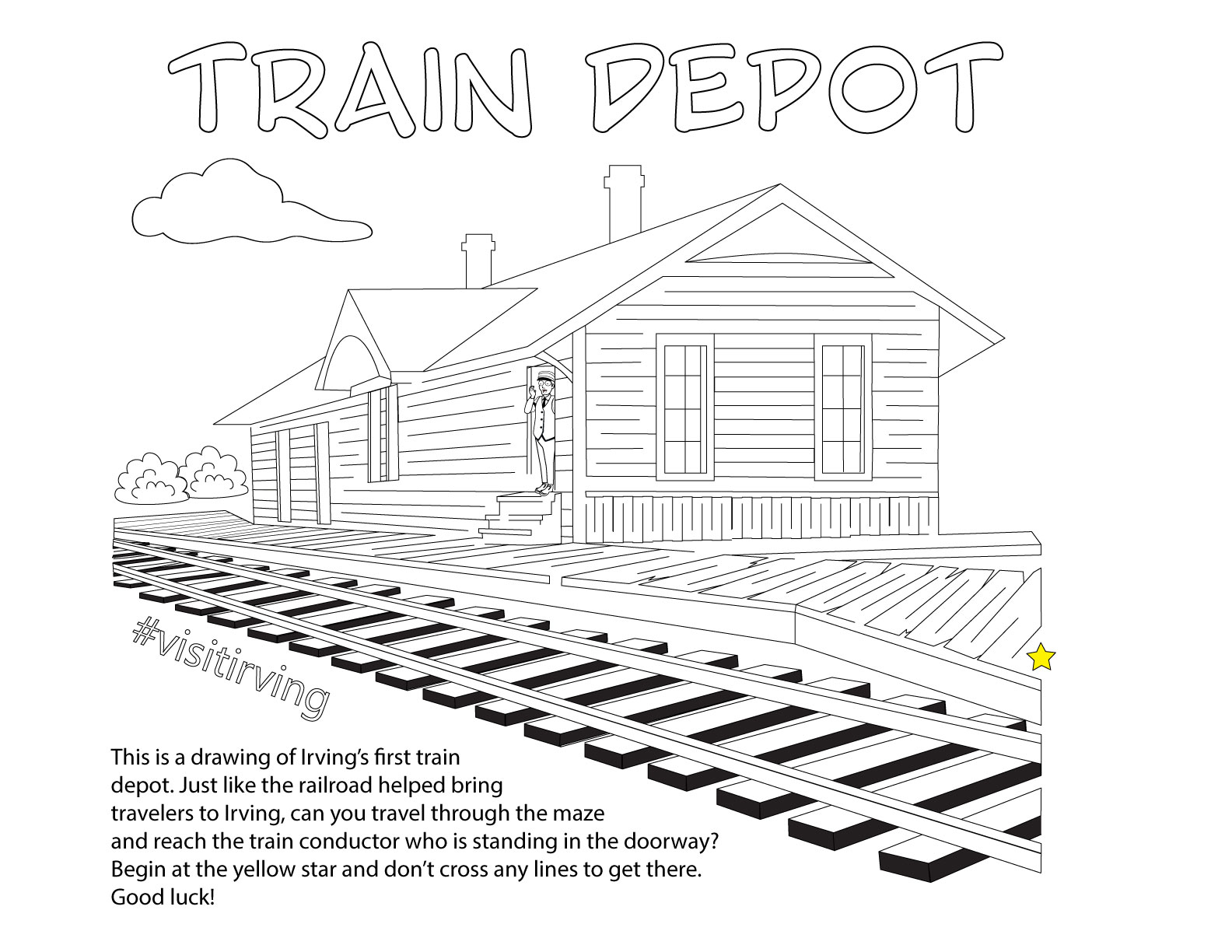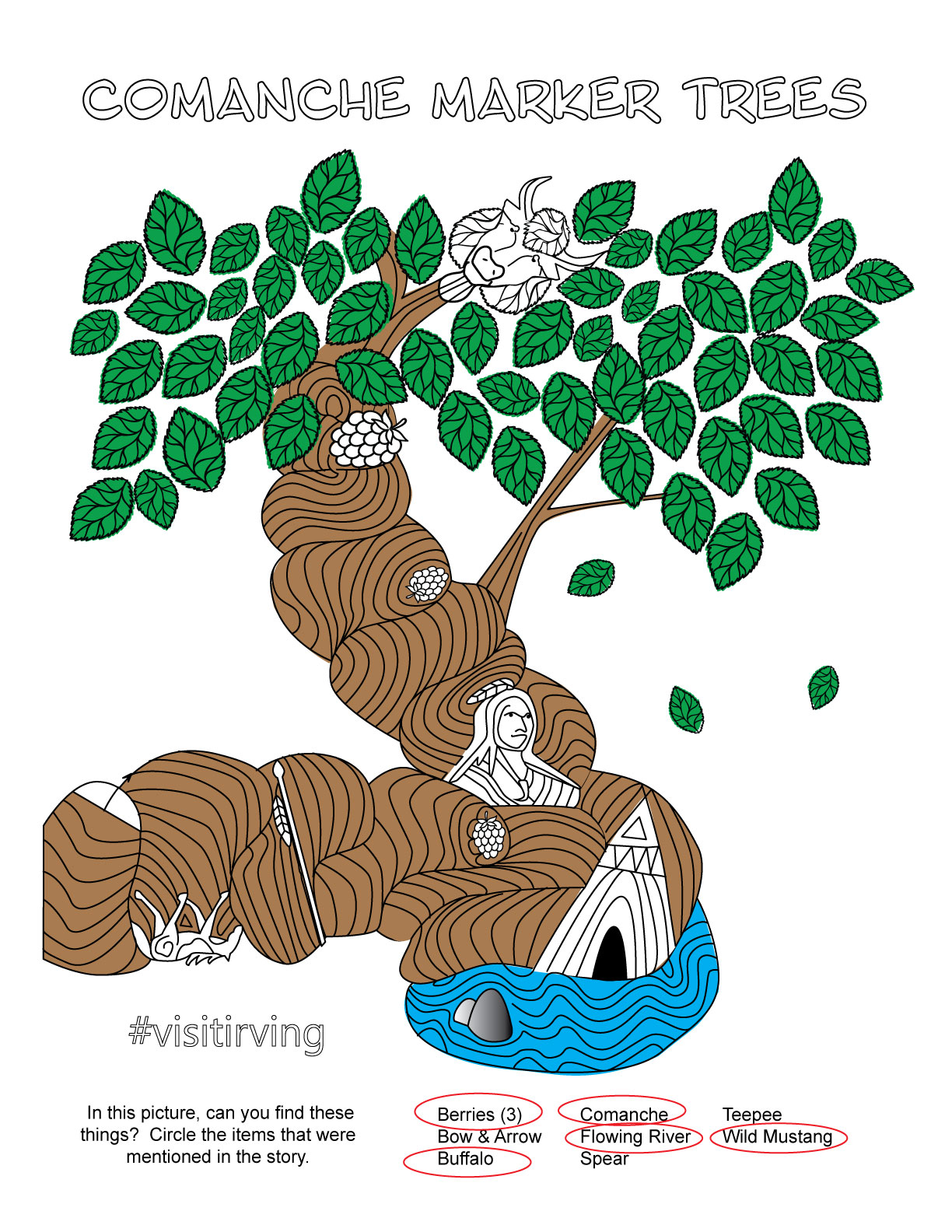Allow me to introduce you to the stories behind many of our attractions and historic areas here in Irving, Texas. This week we'll look at how the railroad played an important part in Irving's history. After the story, you can have fun with the Irving Train Depot activity page. Simply click on the image below to print it out. The answers to each activity page will appear in subsequent blogs. So let's get started!
Have you ever thought about what it would be like if there were no cars? How would you get to the store? And what if there were no stores? You would have to eat what you grew in your garden and raised in the barn. But at least you would have a horse and wagon. There would be no roads, just trails, and pathways - which weren’t very smooth either. They’d go uphill and down, through small creeks with rocks and bushes and trees in the way. And when it rained, the trails were muddy and your wagon would get stuck. Finally, imagine traveling from Ft. Worth to Dallas - it would take two days to get there! In fact, you'd have to spend the night in your wagon on the side of the trail because there were no towns along the way. That’s how people lived before there were cars.
Now, think about how fast you could go if you were on a train. If you needed supplies from other areas, you could ship them on a train. Whether it was raining or sunny or even snowing, the train traveled all the time, in all kinds of weather. Instead of taking two days to travel from Ft. Worth to Dallas, by train it only took about two hours. That's how long it takes now in rush hour traffic. So think about how important it was back then to build train tracks that connected all the different towns.
It was during this time when the Chicago, Rock Island and Gulf Railway decided to build a train track from Ft. Worth to Dallas. Before they started laying down the tracks, they had to send out their employees to look at the land and figure out where the best place would be to build their railroad. (Google the word Surveyor). There were two surveyors who saw the wooded lands and large prairies in an area that’s now called Irving. And they had a great idea. Their names were Julius Schulze and Otis Brown. We’ll learn more about them and their great idea next week, just be sure to remember their names.
After the railroad was built in 1903, Irving grew into a big town. The train brought people, groceries, and supplies from towns far, far away. Even though we now have cars to take us places, thousands of people still travel on these same railroad tracks that were built over 100 years ago. You can see what the old train depot looks like that sat near where the DART Station Downtown is now. There's a historic depot at Heritage Park that’s very similar to the original one that was built here in Irving in 1903. Here you can also see Irving’s first water tower, windmill, and library. The park also contains one of Irving’s oldest structures, the Caster Cabin built in 1887. When you go to visit, try to imagine what life was like back when there were no cars, televisions, computers, or giant grocery stores.
Visit our website at www.irvingtexas.com for more historic information about Irving. Until next week . . .
Click here to download the Train Depot activity page for printing
And here are the answers to last week's Comanche Marker Tree activity page. Click here if you want to print the answer page below.



